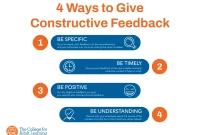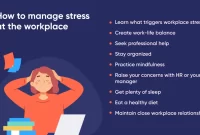Effective Presentation Skills for Career Advancement
Mastering the Art of Engaging Presentations
Effective Presentation Skills for Career Advancement
Presentations play a crucial role in today’s professional world, and mastering the art of engaging presentations is a skill that can greatly boost your career advancement. Whether you are delivering a pitch, presenting a project, or speaking at a conference, effective presentation skills can make a lasting impact on your audience and help you stand out from the crowd. Here are some key strategies to enhance your presentation skills:
1. Know Your Audience
Before diving into the content of your presentation, take the time to understand your audience. Who are they? What are their interests and priorities? Tailor your message accordingly to ensure it resonates with them and addresses their needs.
2. Structure Your Presentation
A well-structured presentation keeps your audience engaged and helps them follow your ideas. Start with a strong introduction to capture their attention, clearly outline your main points, and use visual aids such as slides to enhance understanding and retention.
3. Tell a Compelling Story
Humans are wired to respond to stories, so use this to your advantage. Craft a narrative that grabs the audience’s attention, inspires them, and makes your content memorable. Incorporate anecdotes, examples, and personal experiences to make your presentation relatable.
4. Be Visual and Engaging
Avoid overwhelming your audience with text-heavy slides. Instead, use visuals, charts, and graphics to convey your key messages. Engage your audience through eye contact, gestures, and vocal variety. Encourage participation by asking questions or incorporating interactive elements.
5. Practice and Prepare
A polished presentation requires practice and preparation. Rehearse your delivery, anticipate potential questions, and familiarize yourself with the technology or equipment you will be using. Confidence comes from being well-prepared.
6. Seek Feedback
After each presentation, seek feedback from colleagues, mentors, or trusted individuals. Their constructive criticism can help you identify areas for improvement and refine your skills further.
By mastering the art of engaging presentations, you can enhance your professional image, showcase your ideas effectively, and increase your chances of career advancement. Remember, practice makes perfect, so seize every opportunity to hone your presentation skills.
Key Techniques for Delivering Impactful Presentations
Effective presentation skills are crucial for career advancement. Whether you are presenting to your colleagues, superiors, or clients, your ability to deliver an impactful presentation can greatly influence your professional growth. By mastering these key techniques, you can enhance your presentation skills and leave a lasting impression on your audience.
1. Understand Your Audience
Before creating your presentation, it’s essential to understand your audience. Research their background, interests, and expectations. Tailor your content and delivery style to ensure it resonates with them effectively. Consider their level of knowledge on the topic and adapt your language accordingly.
2. Structure Your Presentation
An effective presentation follows a clear and logical structure. Organize your content into an introduction, main points, and a conclusion. Use headings and subheadings to guide your audience throughout the presentation. This structure will help them follow your message and retain key information.
3. Engage with Visuals
Visual aids, such as slides or props, can greatly enhance your presentation’s impact. Use high-quality images, charts, and graphs to convey your message visually. Keep the visuals concise and uncluttered, ensuring they support and reinforce your key points rather than distracting from them.
4. Practice and Rehearse
Practice makes perfect when it comes to delivering presentations. Rehearse your presentation multiple times to build confidence and fine-tune your delivery. Pay attention to your body language, voice modulation, and pace. Practicing will help you identify areas for improvement and ensure a smooth and confident delivery on the day.
5. Engage Your Audience
An impactful presentation actively engages the audience. Encourage participation by asking questions, seeking opinions, or conducting interactive activities. This involvement creates a two-way communication flow and keeps your audience connected and attentive throughout your presentation.
6. Use Powerful Storytelling
Stories have a remarkable ability to captivate an audience. Incorporate relevant anecdotes or case studies into your presentation. Stories can help illustrate your points, make complex information more relatable, and evoke emotions. A well-told story can leave a lasting impression on your audience.
7. Maintain Eye Contact
Maintaining eye contact establishes a connection with your audience. It conveys confidence, credibility, and trustworthiness. Make an effort to look at different individuals in the audience throughout your presentation. This simple technique helps to create engagement and keeps your audience attentive.
8. Deliver a Strong Conclusion
A strong conclusion reinforces your key message and leaves a lasting impact. Summarize your main points, reiterate your key takeaways, and close with a memorable statement or call to action. Make sure your conclusion is clear, concise, and compelling, leaving your audience with a strong impression of your presentation.
Nurturing Confidence and Overcoming Public Speaking Anxiety
Public speaking anxiety can be a common obstacle in professional growth and career advancement. However, with proper techniques and practice, it is possible to effectively overcome this fear and develop strong presentation skills.
One key aspect of nurturing confidence and conquering public speaking anxiety is thorough preparation. Taking the time to research and organize your content will not only ensure a coherent and well-structured presentation, but it will also boost your confidence in delivering the message.
Another vital element is practicing your presentation repeatedly. Rehearsing in front of a mirror or with a small group of trusted friends can help reduce anxiety and refine your delivery. Additionally, recording and reviewing your practice sessions can provide valuable insights for improvement.
Additionally, it is essential to be mindful of your body language and voice projection. Maintaining good posture, making eye contact, and using appropriate gestures can convey confidence and engage your audience. Similarly, varying your tone and speaking clearly will enhance your message’s impact.
Moreover, employing visual aids such as slides or props can effectively support your presentation. However, it is crucial to avoid overwhelming your audience with excessive text or distracting visuals. Keep your visual aids concise and visually appealing to complement your spoken words.
Lastly, gathering constructive feedback is an essential step in honing your presentation skills. Actively seeking feedback from colleagues, mentors, or attending public speaking workshops can help identify areas for improvement and provide valuable guidance.
Overcoming public speaking anxiety and nurturing confidence requires time, dedication, and practice. By implementing these strategies, individuals can develop effective presentation skills, empowering them to excel in their professional journey.
Conclusion
Developing effective presentation skills is crucial for career advancement. By mastering key techniques such as confident body language, clear messaging, and engaging visuals, professionals can deliver impactful presentations that leave a lasting impression on their audience. Additionally, practicing and receiving constructive feedback can further enhance presentation abilities. With strong presentation skills, individuals can effectively communicate their ideas, showcase their expertise, and command attention, ultimately propelling their career to new heights.




